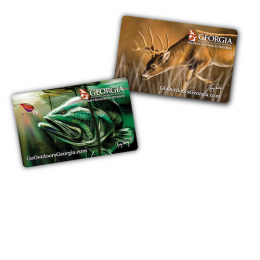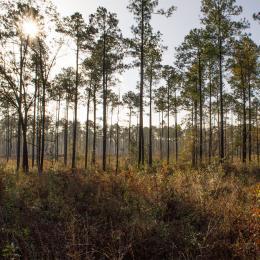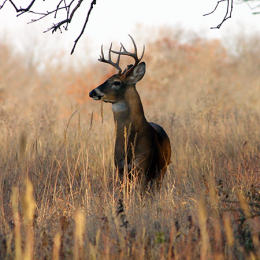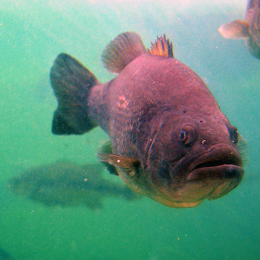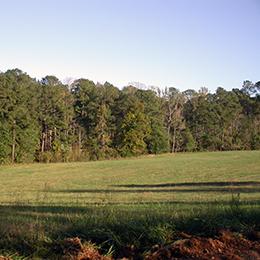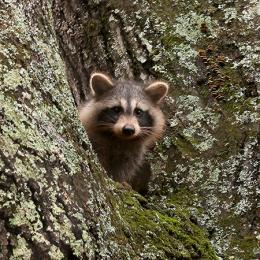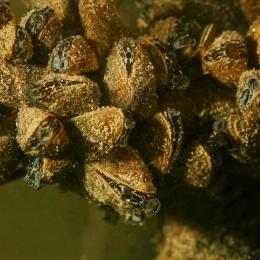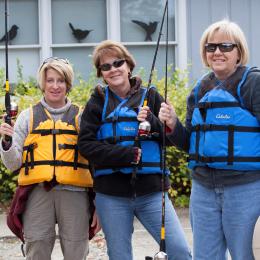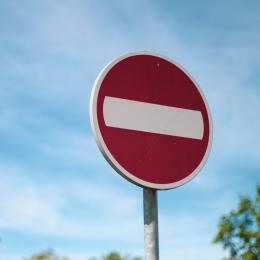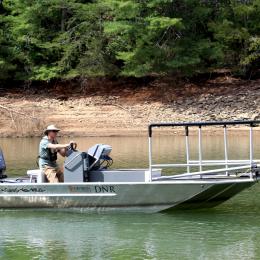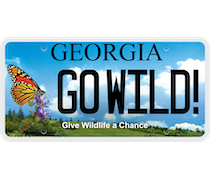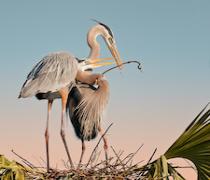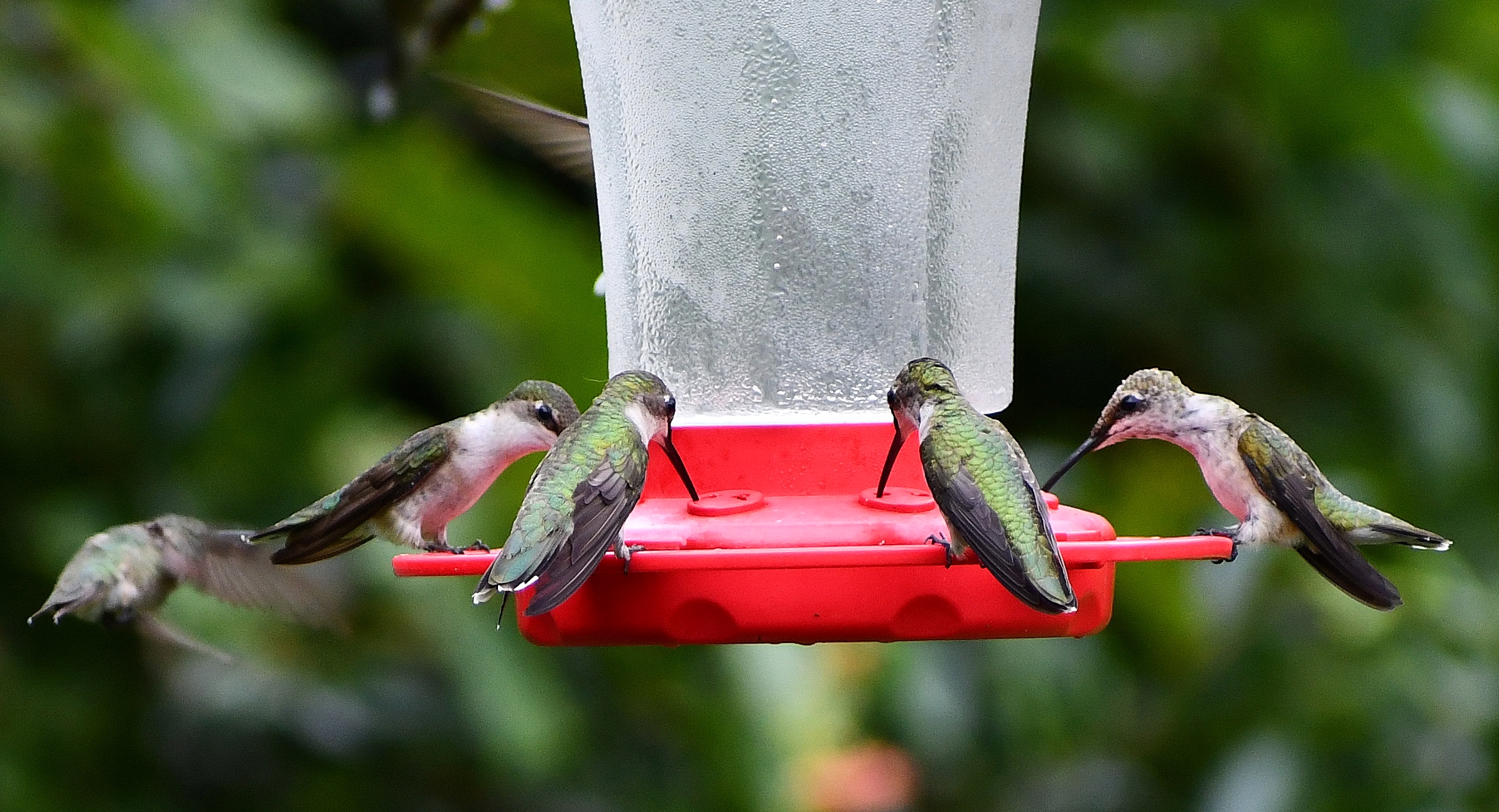
Ruby-throated hummingbirds crowd a feeder (Terry W. Johnson)
By Terry W. Johnson
Throughout the ages, ruby-throated hummingbirds have captivated humankind’s imagination. This is borne out by the names given these birds.
The Cherokees referred to hummingbirds as walela. The word means grace, agility and beauty. Later, Spanish explorers called them flying jewels. Early English and Swedish colonists thought they were so special they named them the King’s birds. Years later, John James Audubon would aptly describe hummers as “glittering fragments of the rainbow.” Today, we still hold them in such high regard that we go to great lengths to encourage them to visit our yards.
Although the first rubythroats arrive in Georgia early in March, they vanish by the end of October. But during summer, they literally swarm about our feeders. At this special time of the year, some hummingbird fanciers can boast of hosting 50 to over 100 of these aerial acrobats.
Indeed, summertime is hummingbird time. And here are some timely tips to help transform your backyard into a hummingbird haven.
Most people try to attract the birds by hanging up a hummingbird feeder. While this will attract lots of birds, based on my experience, the folks that have the most hummingbirds are those that provide more than sugar water. They realize hummingbirds also need to dine on small insects and spiders, as well as nectar produced by a wide variety of plants.
However, for this column, let’s focus on feeders. First, most know that nectar can be made by mixing four parts water to one part sugar. Heat the mixture for 3-4 minutes, then let it cool before feeding it to the birds. Store the remainder in the refrigerator.
It is important that you do not let your nectar spoil. With that in mind, change nectar before it gets cloudy. If the fluid turns cloudy it contains harmful bacteria and fungi. If the interior of your feeders develop black spots, clean them. The spots are signs of a feeder infected with mold.
There is no need to use nectar colored red. Hummingbirds are attracted to the red color displayed on the feeder itself.
I should also mention that it is a good idea to initially offer food in one or two regular-sized feeders. Later, if you are lucky enough to attract lots of hummers, the addition of more or larger feeders will help satisfy the squadrons of hummers patrolling your yard.
Hummingbirds are territorial and will inevitably fight with one another over access to feeders. Fortunately, during the summer when the birds are preparing for their fall migration, hummingbirds are a bit more tolerant of one another.
Insects such as bees and ants are often troublesome. These pesky critters dine on nectar spilled on the outside of feeders. Some will actually climb down into the nectar looking for food. There are several ways to prevent this from happening. For example, some feeders are equipped with bee guards. These devices help stop short-tongued insects such as yellow jackets, wasps, honeybees and other insects from reaching the nectar.
Some feeders also have portals that are too small for insects to reach the nectar. Manufacturers replace the larger, round feeding portals with slender slits that are just large enough to allow the bill of a hummingbird to slip through.
The problem posed by stinging insects attempting to dine at feeders can be alleviated by spreading vegetable oil around the feeding portals. Bees don’t like greasy feet. It should also be noted that feeders without artificial yellow-colored flowers around each portal attract fewer bees.
Ants can be thwarted by placing grease on the wire above the feeder. Plastic bee motes work, too. Place the mote just above the feeder and fill it with water. You can also buy a product called AntGuard, a plastic bell-shaped device that hangs above a feeder and has a small amount of repellent that will purportedly keep ants from reaching the feeder.
In recent years, a few researchers have looked into trying to determine if nectar served in a feeder can get hot enough to injure the birds. In one study, biologists found that when hummingbirds dine on nectar heated to 102.2 degrees Fahrenheit, their metabolic rate is adversely affected. Some also maintain that hummingbirds eating hot nectar can suffer a burning sensation on their tongue.
If you are concerned that this is a problem, try using feeders with glass reservoirs. Because glass is an excellent insulator, nectar in glass containers does not get as hot as it does in plastic feeders. Another approach is to wrap your feeder in aluminum foil. The foil reflects about 98 percent of the radiant energy striking the aluminum shield. (I have tried this and found that hummingbirds do not shy away from a feeder protected with aluminum foil.)
You should also consider hanging feeders in the shade. The nectar in feeders placed in the shade, of course, does not get as hot as it does in feeders hung in the sun.
I hope these tips help you have the best hummingbird you have ever experienced. If they do, there is a very good chance that by summer’s end you will agree summertime is indeed hummingbird time.
Terry W. Johnson is a retired Georgia DNR program manager and executive director of The Environmental Resources Network, or TERN, the friends group of DNR’s Wildlife Conservation Section. Check out past columns, his Backyard Wildlife Connection blog and his book “A Journey of Discovery: Monroe County Outdoors.” Permission is required to reprint a column.






